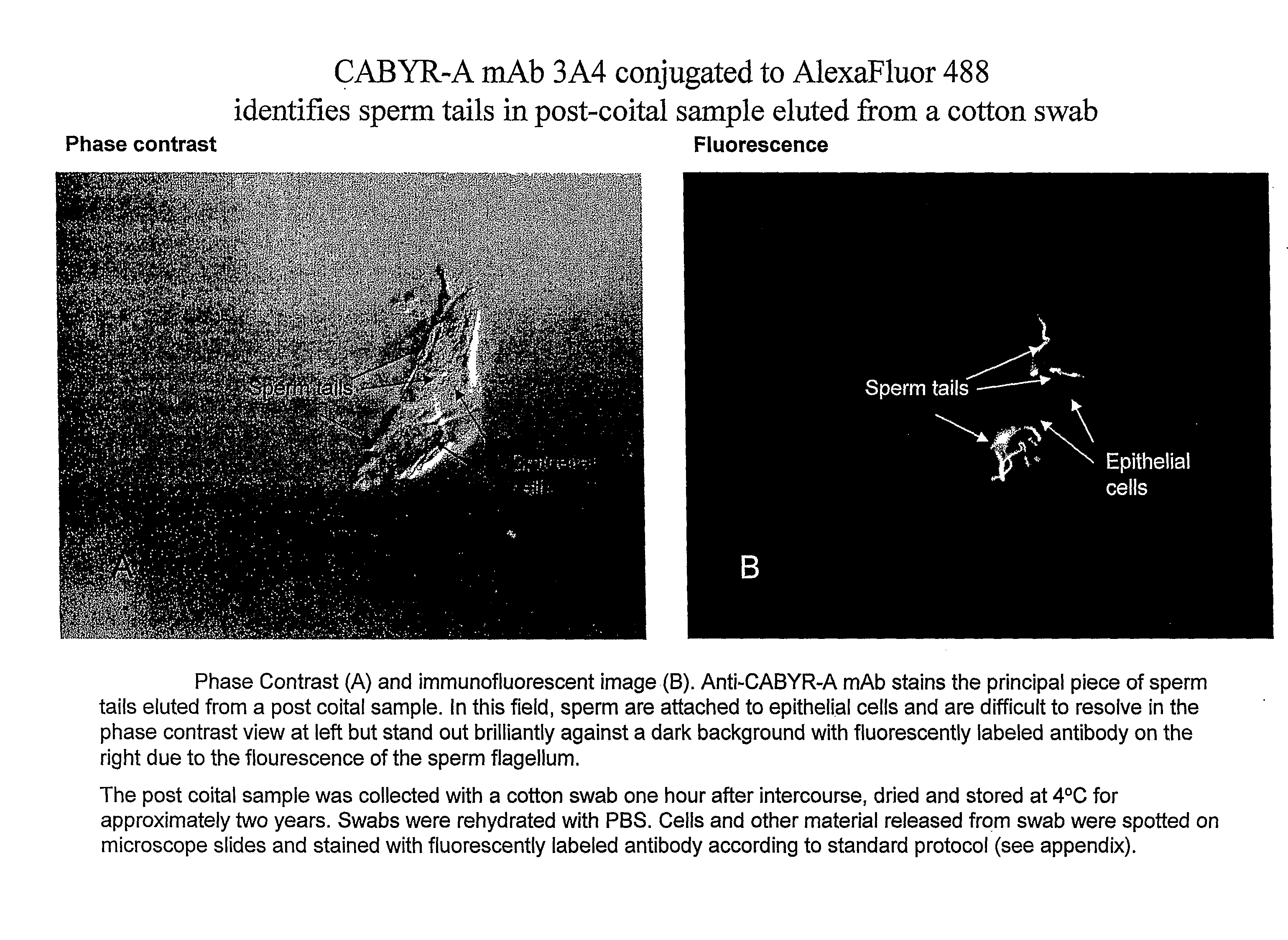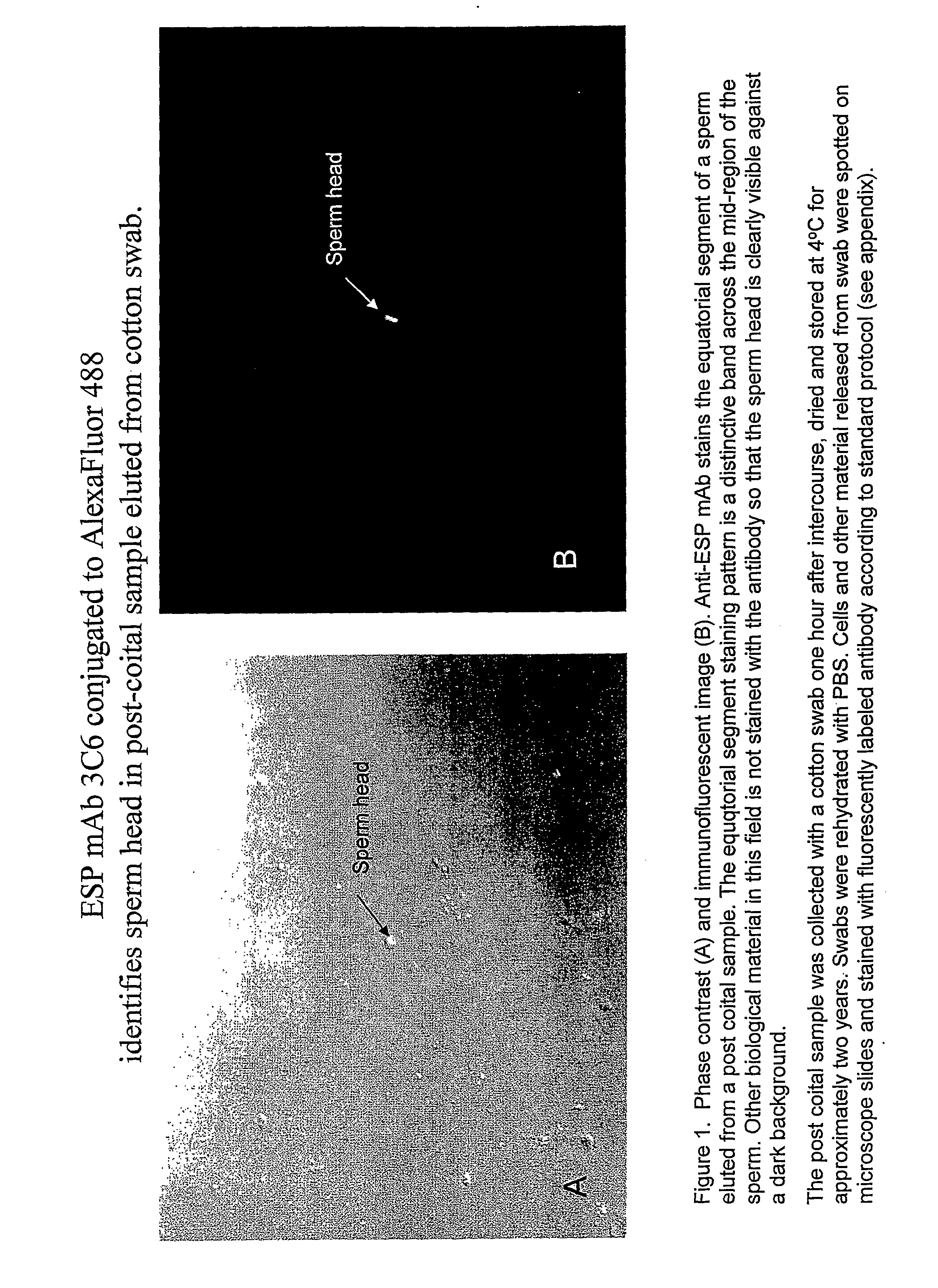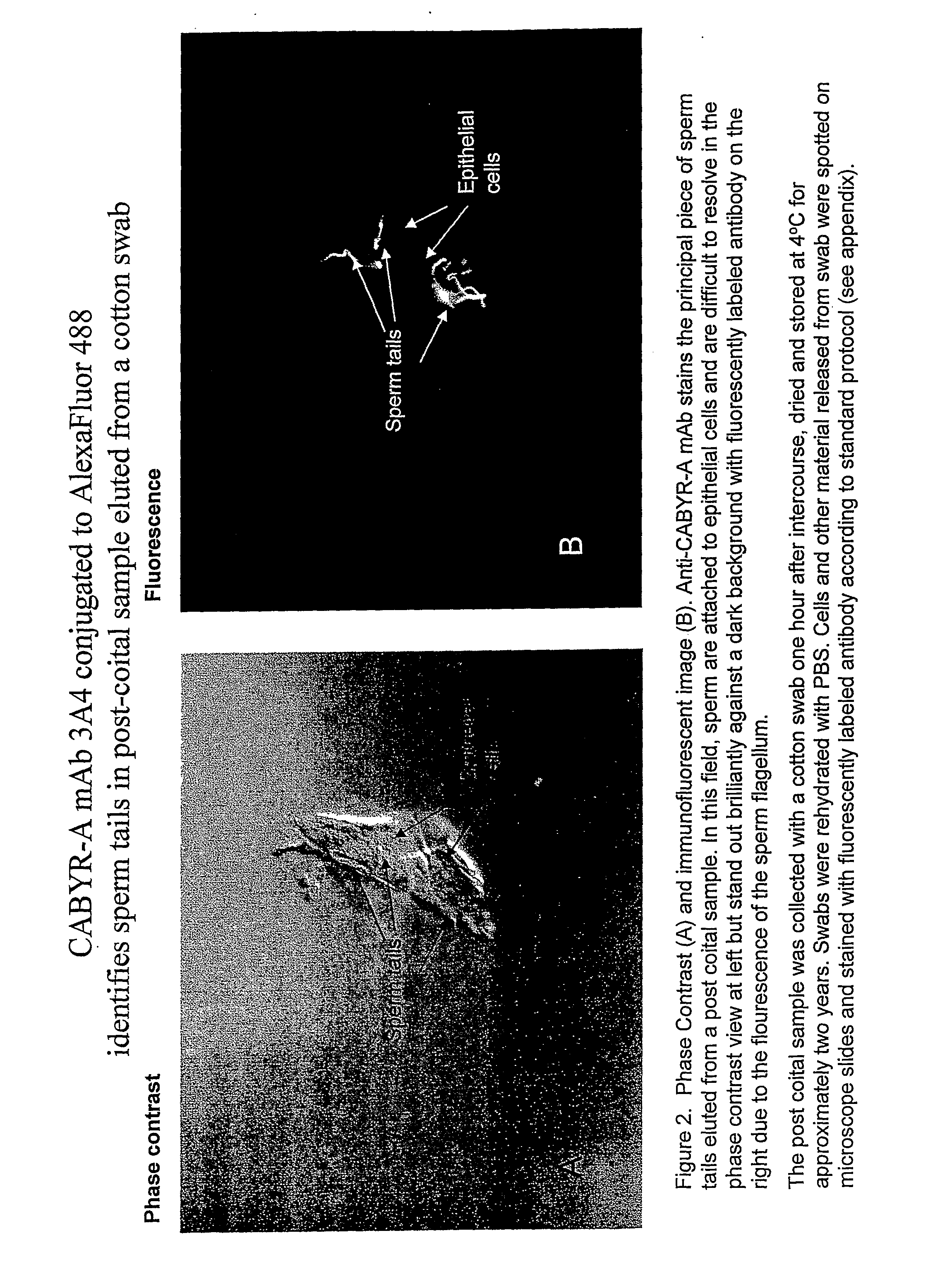Compositions and Methods for Identifying Sperm for Forensic Applications
a technology of forensic applications and sperm, which is applied in the field of detecting and isolating sperm, can solve the problems of application, application, and application, and achieve the effects of reducing the presence of contaminating cells, improving the speed and accuracy of handling sexual assault evidence, and improving cell separation
- Summary
- Abstract
- Description
- Claims
- Application Information
AI Technical Summary
Benefits of technology
Problems solved by technology
Method used
Image
Examples
example 1
Protocol for Staining Sperm Containing Forensic Samples
[0169]1. Samples collected on cotton-tipped swabs are rehydrated in 0.5 ml PBS per swab for 20 minutes, agitated manually at 5 minute intervals to release the sample into PBS.
25 μl of sample is applied to a microscope slide and air-dried at room temperature.
2. The sample on the slide is rehydrated with PBS for 5 minutes, the PBS is aspirated,
the sample is fixed with 4% paraformaldehyde for 20 minutes and then washed two times with PBS.
3. The sample is blocked with 10% normal goat serum in PBS for 30 minutes at room temperature.
4. The blocking solution is aspirated and a monoclonal antibody conjugated to a fluorophore is applied to the sample at a concentration of 10 μg / ml in PBS and incubated for 2 hours at room temperature in a humidified chamber.
5. The antibody solution is aspirated and the sample is washed five times with PBS.
6. An antifade reagent is applied and the sample is covered with a coverslip and sealed with nail pol...
example 2
Loss of Antigens Associated with the Plasma Membrane of Sperm
[0171]Following a Human Investigation Committee-approved protocol (HIC #9297), post-coital swabs were collected from 39 volunteer couples. After informed consent was obtained from volunteer couples, they were given sample collection kits containing cotton swabs and labeled boxes with holes that allowed the swabs to air dry. The same boxes are used in sexual assault evidence kits in Virginia hospitals. From each volunteer couple, 10 vaginal swabs were collected at each of four time points ranging between 1 hour and 72 hours after consensual sexual intercourse. Samples were initially investigated at the 2, 6, 12, and 24 hour time points. In some cases swabs were collected at 1, 12, 24, and 72 hours after intercourse. Buccal swabs were also collected from male and female partners to provide control DNA.
[0172]Swabs were stored in coolers with ice blocks until they were brought to the study coordinator. They were then stored at...
example 3
New Sperm-Specific Antigens are Proposed as Targets for Sperm Immunoselection in Forensic Samples
[0175]Electron microscopy analysis of sperm recovered from dried swabs indicated that antigens located on the plasma membrane of sperm, such as SAGA-1, may not be the best targets for sperm immunoselection (See Example 2). Consequently, other sperm-specific antigens were considered as potential targets for immunoforensic analysis. Since the sperm head is often separated from the tail in sexual assault evidence recovered from swabs, potential target antigens are sperm head antigens and sperm tail antigens. Table 1 provides a list of some sperm-specific antigens which can be targeted for detecting sperm and for isolating sperm.
TABLE 1ESPEquatorial Segment Protein, localized to the equatorialsegment of thesperm head.SPAN-XMajor component of the cytoplasmic droplet and localizedto the redundant nuclear membranes and nuclear vacuolesof 50% of all sperm.CBP86Calcium Binding Protein 86, localiz...
PUM
| Property | Measurement | Unit |
|---|---|---|
| pH | aaaaa | aaaaa |
| time | aaaaa | aaaaa |
| size | aaaaa | aaaaa |
Abstract
Description
Claims
Application Information
 Login to View More
Login to View More - R&D
- Intellectual Property
- Life Sciences
- Materials
- Tech Scout
- Unparalleled Data Quality
- Higher Quality Content
- 60% Fewer Hallucinations
Browse by: Latest US Patents, China's latest patents, Technical Efficacy Thesaurus, Application Domain, Technology Topic, Popular Technical Reports.
© 2025 PatSnap. All rights reserved.Legal|Privacy policy|Modern Slavery Act Transparency Statement|Sitemap|About US| Contact US: help@patsnap.com



